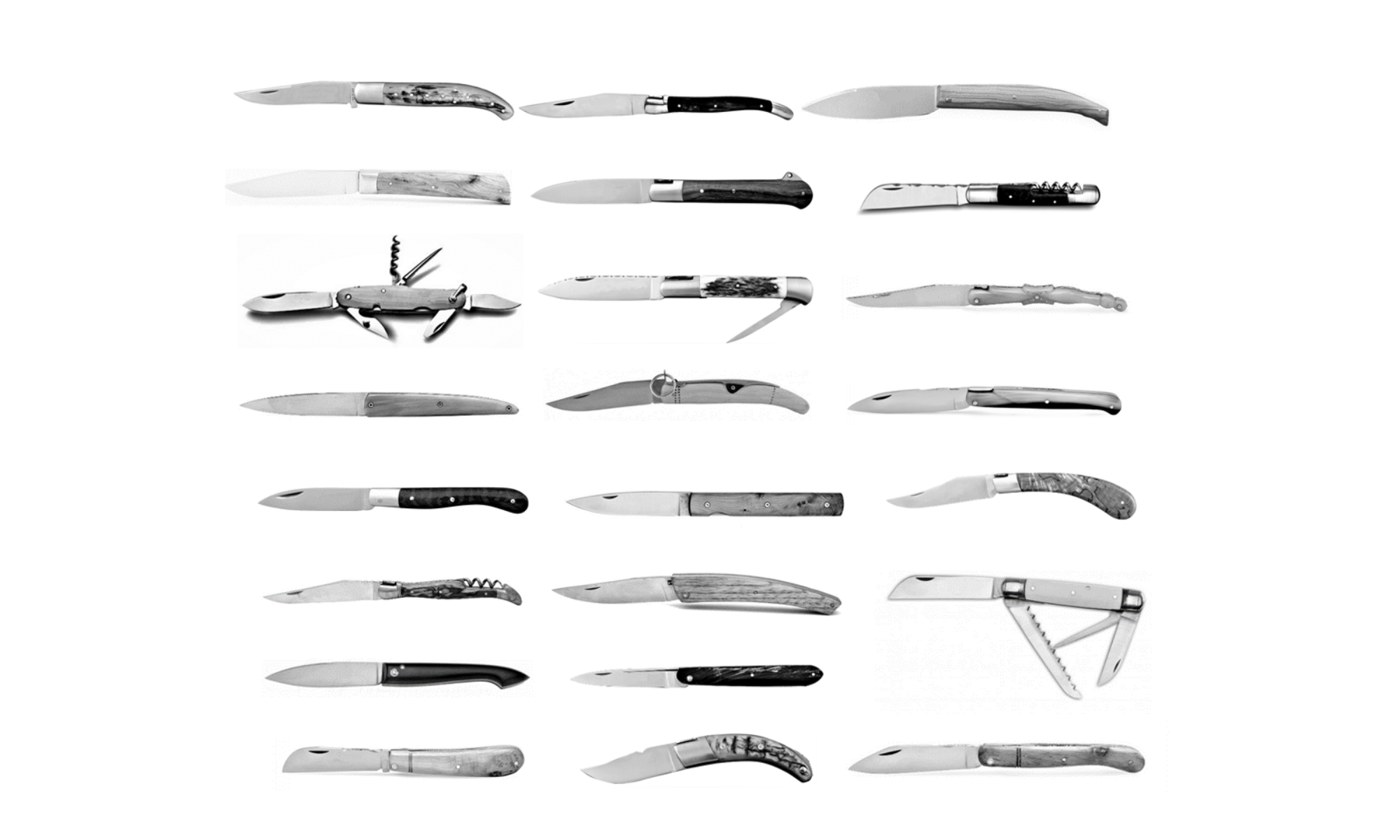
The city of Thiers finds its origin in the medieval age and can claim six centuries of cutlery tradition.
The legend says that the Crusaders bring back the secret of steel but the history of knife making can be dated back to the fifteenth century as tax registers mention thirty knife makers in the city that will turn to be 200 in the sixteenth century.

Oddly enough, the city didn’t have real assets to become the capital of knife making, there is no iron ore for the blades or sandstone to make grinding wheels, but there is the Durolle, the torrent that will provide enough energy for the cutlery machines, and the obstinacy and hard work of people living on a rocky, steep and hard territory, working in the fields in summer and making blades in winter.

Long before Henry Ford, it is in the fifteenth Century that the division of labor started in Thiers with people specialized in the various steps of knife making, to the final assembly. It was not anymore a single cutler that was making the entire knife.


The working conditions were really hard. The cutlers shaping the blades on the grinding wheels were called the “yellow bellies”, because, in the unique Thiers style, they were grinding the blades laying over the wheel, with a dog on their legs to keep them warm.
They were working down in the valley, next to the water that was used to provide the power.

On top of the cold and humidity, the noise of the machines is loud and, if the grinding wheel explodes, the cutler is projected to the ceiling, with a little chance of survival.

That part of the valley is called “Hell” (L’enfer in French), one of the buildings was even called like that.

For the other specialties it is not more comfortable, the presses and hammering machines are dangerous and the temperature in the forge can reach 120F.

But that specialization and efficiency made that knife makers and merchants in various French regions were ordering knives to Thiers.


For instance, the cutlers from the village of Laguiole, in Aveyron, had to order knives in Thiers, as they were not able to keep up with the demand. Those knives were originally called “Laguiole style” before being definitively called Laguiole when all the production was finally done in Thiers.

The same story happened to different regions and cities, this is why most of the French knives have the name of a city or a region like Yssingeaux, Issoire, Alpin, Montpellier, Rouennais etc.




Thiers even produced some “Spanish” navajas.
When the city was, and is still today, making the knives of all the different French regions, it never had its own style of knife. It was corrected rather late, in 1994, when “Le Thiers” was created. It will be the object of a later article.

Today electricity definitely replaced all the water powered machines and Thiers and its surroundings is still making between 70% and 80% of the French bladed tools, earning its status of French knife making capital, with its museum and “Coutellia”, the annual international blade show.
Find some examples of fine French cutlery on http://knives-of-france.com


